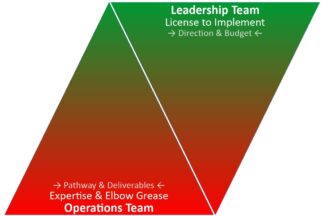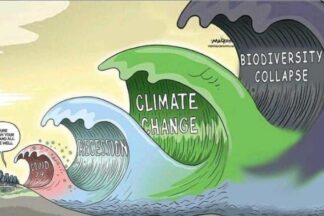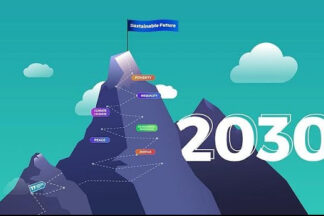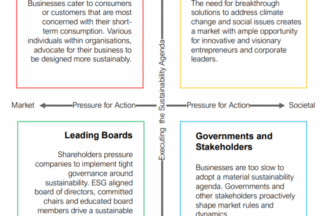‘The conversation is always about cost, not about impact!’ And: ‘Employees just don’t get moving!’
Do these statements remind you of your company’s challenges? Your not alone!
Leadership and Operations Teams have complementary sustainability implementation accountabilities and responsibilities. But instead of leveraging that fact, more often than not the blame game is played.
What to do about it?
Implement Fair Process Leadership governance processes - and train all teams through Serious Games.
Textile Exchange recently launched their (first ever) Biodiversity Insights Report. In itself not a bad idea per se – after all, assessing the staus quo of things is at least a baseline – the report is indeed ‘insightful’ in a number of ways. Most importantly: it raises a lot of questions. Such as:
If predominantly large companies are such laggards in all things biodiversity - can you imagine the situation in companies with much less resources? And why are entirely inadequate tools used to measure biodiversity? Are the commitments not just a rehash of climate committments, that only very recently start to show teeth and results?
Most companies have had a brush with sustainability (or it’s finance industry lens: ESG) at the very least on an operational level. Not necessarily always voluntarily or out of conviction, mind.
Looking at corporate boards however, the picture starts to change – not necessarily to the better. While boards of listed companies may have been forced to look at non-financial disclosure, it is rare that any board has a sound grasp, never mind approach, to all things ESG and sustainability.
This is why I list in this post the few tools I am aware of that are specifically targetting and intended to help corporate boards start on the journey towards becoming climate and SDG savvy.
If you’ve ever been part of a bigger discourse about how to scale out sustainability economically and globally, you’ll have been quick to notice that by and large you’ll be faced with representatives of four distinct camps of advocates:
The Grassrooters; the 'Setting the tone at the top' people; those in support of government regulation driven by civil society; and the 'Fiduciary Duty Advocates'.
But which camp owns the driving leadership role? Funnily enough, that role does get handed around as if it was a game of musical chairs ... or the proverbial hot potato.
We all interact frequently with SMEs of different types, characters, and offers. Yet there are two types of such businesses. Those where 'the spark' is graspable: Their vision, raison d'etre, motivation, aspiration, commitment. And then those, who at best surf the waves of third party demands. Content to be 'victims' instead of taking the courage to forge their own irons. A never ending fascination.
Over a decade ago, Simon Sinek pointedly demanded: Start with Why.
Targeted at a then rather uninspiring marketing and branding industry, 10 years on is still as valid as ever.
Just now, we need to ask businesses: Why are you bothering with investing millions, and thousands of hours into sustainability?
Often the answer will be: because we have to. An answer just as uninspiring as the sales slogans Sinek was bashing a decade ago.
Because when it comes to Sustainability: Know your genuine Why. Or don't bother.
Research has known for a while that when someone in your presence is trying to think, much of what you are hearing and seeing is your effect on them. That is also the case for boards.
Because: under the right conditions and circumstances, people will – invariably – think for themselves. Just: is that desired?
There are two approaches on how we can define of what is viable and desirable for our global economy.
In one, the 'soft attributes' and non-physical factors such as consumer desires, lifestyles or distribution of goods are a fixed attribute. In the other, quantifiable, physical attributes - amongst them natural resources - are fixed.
The challenge of boards in this time and age: Recognising that the first - the present - is failing. And outlining the path towards the second.
In mountaineering there are three distinct methods to handle the rope. Each technique has some distinct application characteristics. And as a consequence, a direct impact on the team work, team effectiveness - and even survival. What can boards learn from alpine roping techniques?
The more time I spend ‘doing sustainability’, i.e. being involved both as a professional as well as as an individual in cajoling, motivating, convincing and helping companies – and the individuals therein - to become ‘better citizens’, the more I realised that … actually, in would not be that hard to do better.
Or let me reformulate more accurately: it is equally hard as many other things in businesses.
During the former Soviet Union, Ukraine developed as one of the largest centres of textile industry, representing approximately 50% of the entire SU's textile industry. And even after the SU fell to pieces, the Ukraine for quite some time remained with its manufacturing power. So, what is the status quo today?
Already early last year the Swedish Fast Fashion retailer H&M announced the placement of test orders for garments from Ethiopian and Kenyan suppliers. And they're not even the first ones: Retailers such as Tesco and Walmart seem to have gone down that lane already some time ago.
As part of a workshop given at the Textile Exchange 2013 conference, we ran a small survey among workshop participants in order to find out more about their perception of and experience with Scenario Planning. Here the survey results.
On November 12 and 13, 2013 the yearly Textile Exchange conference took place in Istanbul, Turkey.
I was invited to run a workshop on Scenario Work as one of the 'Strategy' break out session on the first day. The workshop was fully booked with 25 highly interested and active participants. In 90 challenging minutes they experienced a compressed version of a Scenario Planning workshop.
The fashion industry, nearly like no other, has gone through dramatic changes in the last 20, 30 years. Indeed it finds itself in the present at a crossroad. Resource scarcity is triggering shifts in business models and supply-chains; waste is the new resource; customers are the sales channel of the future; and legislation is becoming ever more stringent. The fact though is: if looking back at predictions of the 1950 and 1960, or even earlier (physical artefacts not considered), the reality we live in compares best to the predictions that were considered ‘totally crazy’ in their time.
In Europe, SMEs make up 99% of all companies, and provide 67% of employment a much higher percentage of jobs in developing countries.
Research has shown that they generate around 50% of the private sector’s turn over, and that SMEs contribute at least 80% to the national GDPs.
Yet less than 20% of policies, government investments etc. are made with them in mind.











